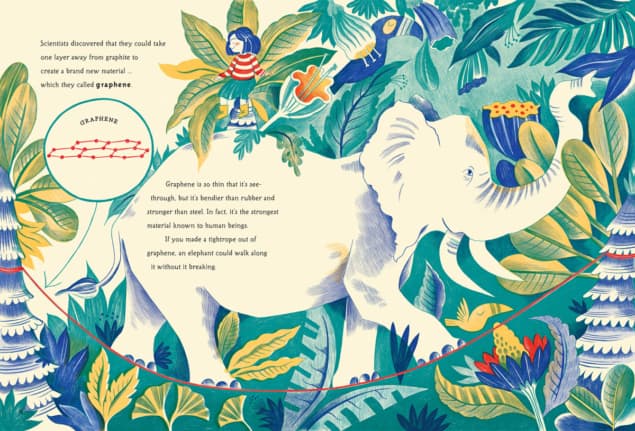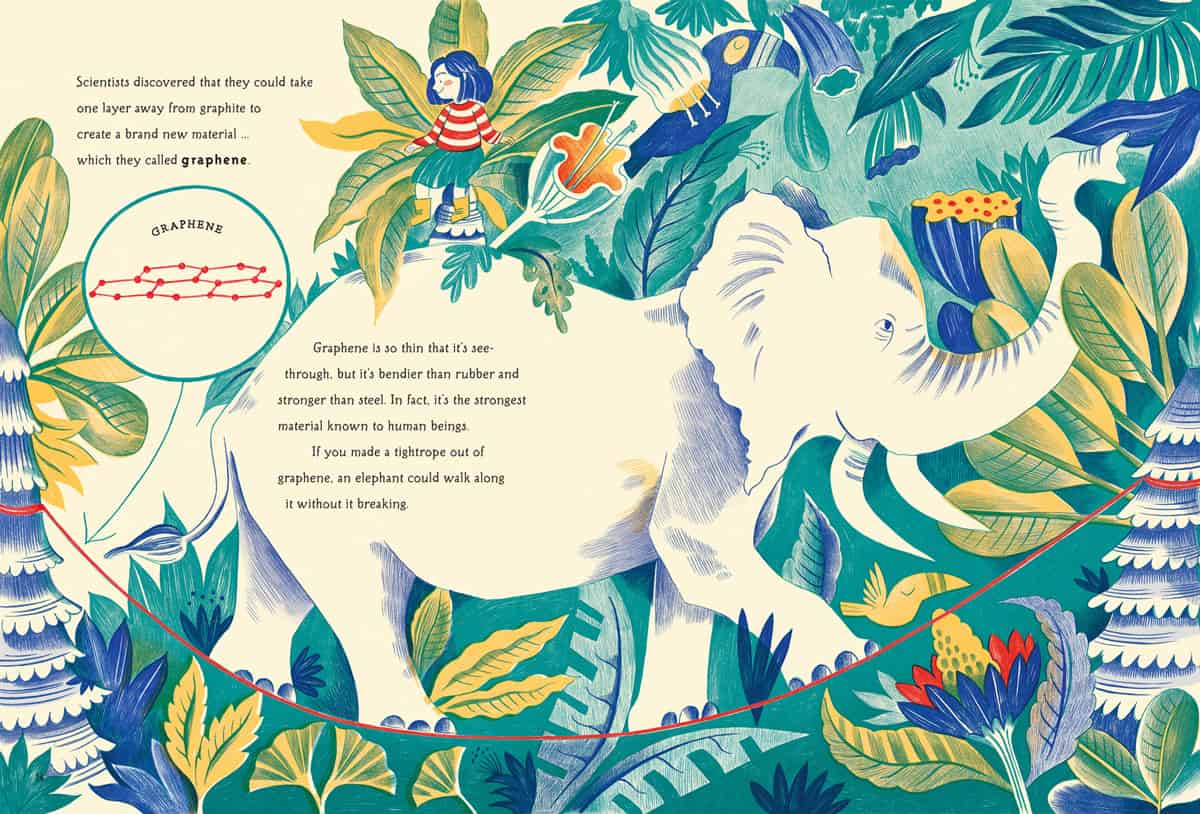Angela Saini and her son Aneurin review Nano: the Spectacular Science of the Very (Very) Small by Jess Wade, illustrated by Melissa Castrillon
 My seven-year-old son Aneurin is often given books as gifts, whether he wants them or not, and he’s amassed quite the mini library. He has high standards. As a critic, he’s fierce enough to throw a book in a corner and never look at it again.
My seven-year-old son Aneurin is often given books as gifts, whether he wants them or not, and he’s amassed quite the mini library. He has high standards. As a critic, he’s fierce enough to throw a book in a corner and never look at it again.
So, I’ve allowed him complete licence to give his own verdict on Nano, a new children’s book on the science of tiny materials. The book is written by Jess Wade, Imperial College physicist and champion for representation and inclusivity in science, and illustrated by Melissa Castrillon, known for designing the covers for Philip Pullman’s His Dark Materials trilogy.
The following are Aneurin’s words written entirely independently, lightly edited only for punctuation and to correct the occasional spelling:
“The book is about very, very, very small science stuff. The book lets you learn a new science word called ‘nano’. There are materials like graphene and graphite. You also get to learn about microscopic things.
There are over 100 types of atoms, and everything is made from atoms, even air and water
“The best page was the page about tiny atoms, and there are over 100 types of atoms, and everything is made from atoms, even air and water. Each type of atom is called an element and there are 11 elements in the human body. A few of them are calcium, carbon and sodium. In every living thing there is carbon, from daisies to oak trees, from beetles to blue whales.
“I loved this book. The pictures are good, nice, clear and artistic. The words are the same. I liked the whole book. Five stars. I learned new words like ‘nano’ or ‘graphite’ or ‘sodium’ and why pencils draw on paper.”
There you have it. Kids are a tricky audience, unashamedly judgemental, which makes the work of a children’s author perhaps the toughest of all genres. But this book clearly hasn’t been rushed. Appropriately for the theme, even the smallest details feel wisely judged.
Something I personally value as a parent is that, unlike some children’s books released in recent years, Nano isn’t marketed to a particular gender. Although the narrator appears to be a young girl with blue hair, this feels almost incidental. All you see is pure passion for the subject she describes, and this is something any child can relate to. It’s vital to have characters that girls and minorities can see and feel more included in the story of science, and as Nano shows, this can be done implicitly and be just as powerful.

How we can widen career aspirations for the next generation
The real focus here is the science itself. Some of the content is quite advanced for a children’s book, but conveyed so skilfully that it remains accessible. Younger readers of five or six will stay for the pictures, but older readers, even aged 10 or 11, will find themselves learning facts that will be new to them. Indeed, Nano is so packed with information that it includes an index at the end.
But it’s not my verdict that matters, of course. The book wasn’t written for readers my age. All you really need to know is that it passed the Aneurin test.
- 2021 Walker Books 32pp £12.99hb
